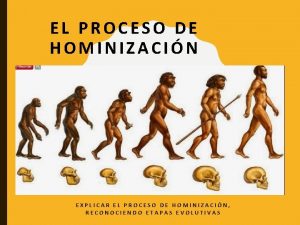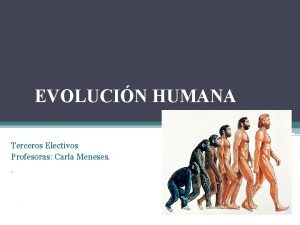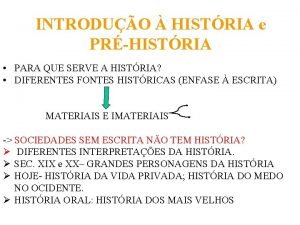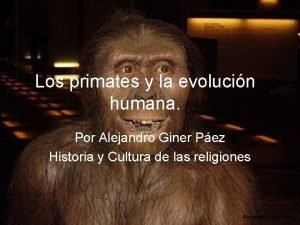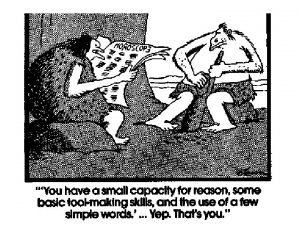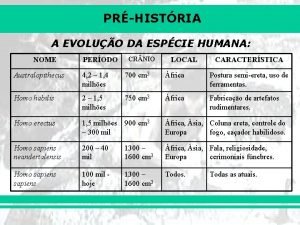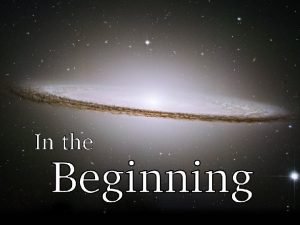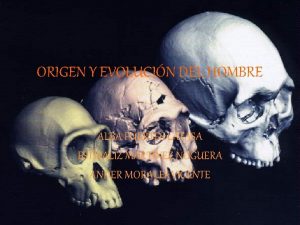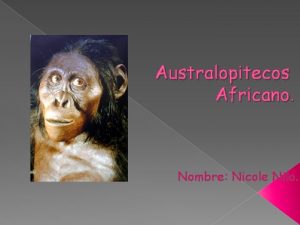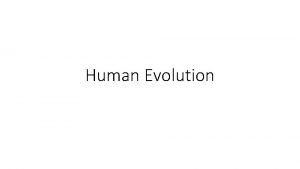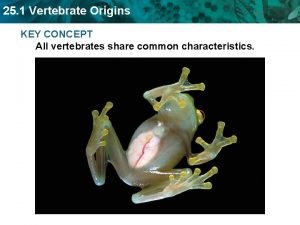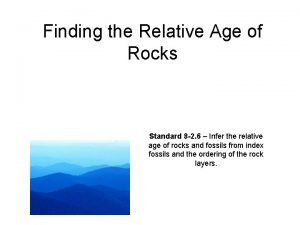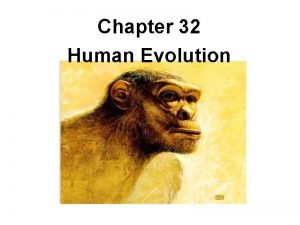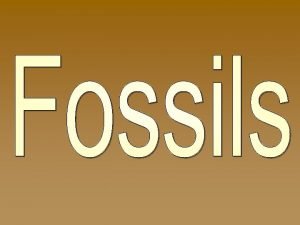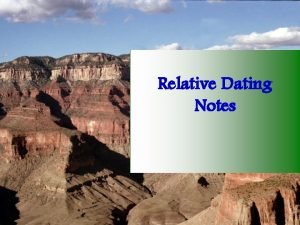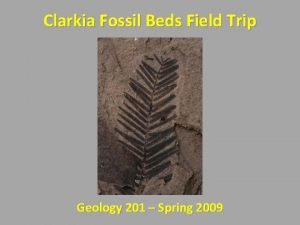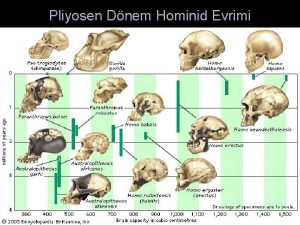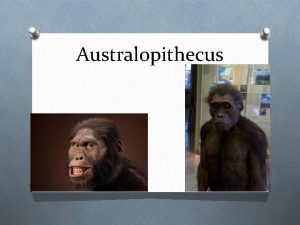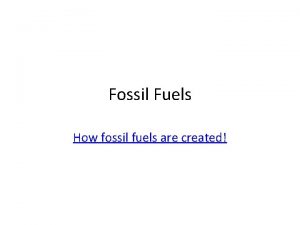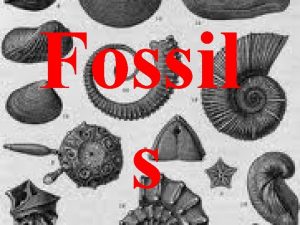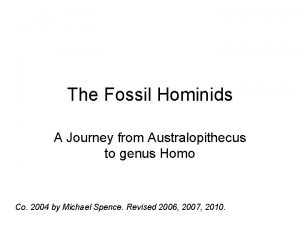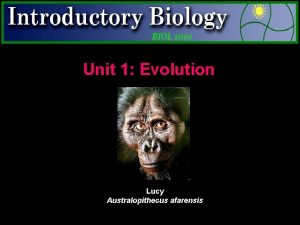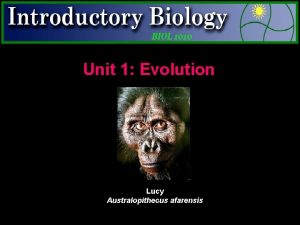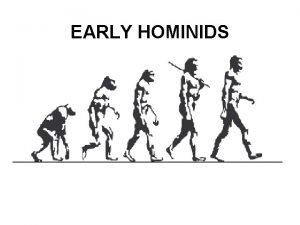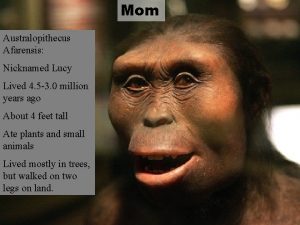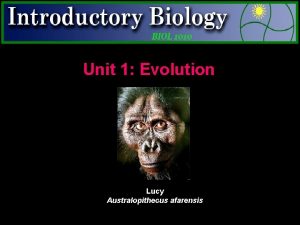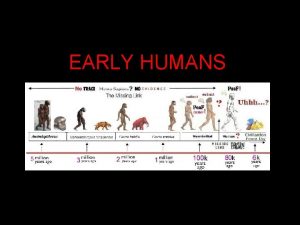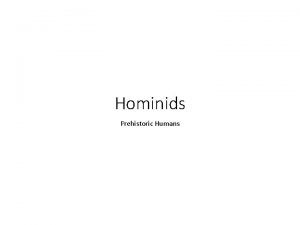Meet Lucy Lucy is a fossil of Australopithecus




















- Slides: 20

Meet Lucy! Lucy is a fossil of Australopithecus afarensis, an early form of human, that was discovered in 1974 in Ethiopia. Lucy is estimated to have lived about 3. 2 million years ago.

What does Lucy tell us about the evolution of humans? • Scientists think Lucy was about 3½ feet tall, 64 lbs. , & looked like the common chimpanzee. • Lucy showed scientists that humans evolved bipedalism before they evolved large brains.

Why do we care? • If today’s species came from ancient species, then we should be able to find remains of those species that no longer exist. • Fossils help us to learn more about where species came from, how they evolved, & why species evolved certain characteristics. Fun Fact The chicken is the closest living relative to the T-Rex dinosaur!

The Fossil Record

Fossils are found all over the world! Fossils that occupy a continuous area can indicate common ancestry in living species!

What does the fossil record show? • Species that once existed & are now extinct • Transitional Forms: fossils or organisms that show the intermediate states between an ancestral form and that of its descendants

Within the fossil record, you can see different rates of change… • Gradualism: slight changes within a population over time (subtle) • Punctuated Equilibrium: a quick change in a population (dramatic - indicates a major event) • Stasis: the idea that during periods of time, little if any change is observed within a population (none)

Gradualism! A. Gradualism B. Punctuated Equilibrium C. Stasis

Punctuated Equilibrium! A. Gradualism B. Punctuated Equilibrium C. Stasis

Stasis! A. Gradualism B. Punctuated Equilibrium C. Stasis

How can we tell how old fossils are? • Scientists use two ways to estimate the age of fossils: – Relative Dating – Radioactive Dating

Relative Dating • Estimate age using the layers of fossils – Old fossils are found below new fossils! • Living organisms may resemble fossils, but differences may be evident.

Which layer is the oldest? Which layer is the youngest? Oldest = F, Youngest = A Do the layers support the idea that change has occurred over a long period of time? Yes, water to desert conditions! What might have happened from layer C to layer B? Erosion

Radioactive Dating • Using carbon dating on rocks & fossils to determine a more accurate time frame in which the organism lived We know how long it takes for radioactive carbon to decay. By identifying how much is left in a fossil, we can give it an age.

Which is more accurate? A. Relative Dating B. Radioactive Dating!

A scientist finds fossils of deer-like animals, pine branches, & birds. This area was at one time most likely a… A. B. C. D. Forest Ocean Desert Tropical Rainforest Forest!

Is it easy reconstructing fossils? • Imagine you are a paleontologist! During your excavation, you find fossil pieces. • With your team, try to put the whole fossil together.

Can you tell what this organism’s closest living relative is?

Ambulocetus natans is an ancestor of the whale.

Before you leave… • On a sheet of paper (share!), answer the following question: By observing fossils of the Ambulocetus natans, what can we tell about the evolution/history of the whale?
 Australopithecus lucy
Australopithecus lucy Till we meet till we meet at jesus feet
Till we meet till we meet at jesus feet La hominización
La hominización Período
Período Evolução humana australopithecus
Evolução humana australopithecus Australopithecus bahrelghazali capacidad craneal
Australopithecus bahrelghazali capacidad craneal Human evolution
Human evolution Pré australopithecus
Pré australopithecus Australopithecus porn
Australopithecus porn Australopithecus características culturales
Australopithecus características culturales Australopithecus resumen
Australopithecus resumen Australopithecus resumen
Australopithecus resumen Australopithecus years of existence
Australopithecus years of existence Concept map on vertebrates
Concept map on vertebrates Rock layer
Rock layer Fossil fuel energy advantages and disadvantages
Fossil fuel energy advantages and disadvantages Fossil diversity
Fossil diversity Remains imprints or traces of once-living organisms
Remains imprints or traces of once-living organisms Fossil fluel
Fossil fluel Index fossil
Index fossil Clarkia fossil beds
Clarkia fossil beds


